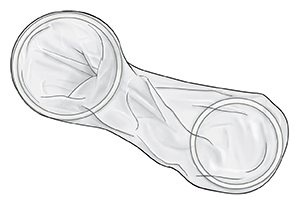Safer Sex Guidelines for Teens
What is "safe" sex?
The only safe sex is no sex, according to most healthcare providers. Abstinence may be the only true form of "safe" sex. All forms of sexual contact carry some risk. You can reduce your risk of getting a sexually transmitted infection (STI) with certain precautions and safe behaviors. As a parent, you can teach your child about safer sex before they become sexually active.
Talking to your teen about safe sex
The American Academy of Pediatrics recommends that parents start talking to children about their bodies and sex, at an age-appropriate level, when they first ask where babies come from. Many teens may say they know everything about sex, but studies have found that many are not completely informed about sex and STIs.
As a parent, you are the best source of accurate information for your teen. But many parents are unsure how to start talking about safe sex with their teens. The following are some tips on how to approach the topic of safe sex with your teen:
-
Talk calmly and honestly about safe sex.
-
Practice talking about safe sex with another adult before approaching your teen.
-
Listen to your teen and answer any questions honestly.
-
Topics that are appropriate for a safe sex discussion may include STIs and prevention, peer pressure to have sex, birth control, different forms of sexuality, and date rape.
Other people who can help talk to your teen about sex may include your teen's healthcare provider, a relative, or a religious counselor. Books on the topic may also help address uncomfortable questions.
Some misconceptions about "safe" sex
-
Kissing is thought to be a safe activity, but herpes and other diseases can be spread this way.
-
Condoms are commonly thought to protect against STIs. It is true that if used correctly and consistently, condoms help prevent certain diseases, like chlamydia and gonorrhea. But they may not fully protect against other diseases, like genital warts, herpes, and syphilis.
Guidelines for safer sex
 |
| Male condom. |
 |
| Female condom. |
Limit your sexual activity to only one partner who is only having sex with you. This helps reduce exposure to disease-causing organisms. Follow these guidelines for safer sex:
-
Think twice before starting sexual relations with a new partner. First, discuss past partners, history of STIs, and drug use.
-
The CDC recommends using latex condoms, with or without spermicides, to help prevent transmission of STIs. This includes sexually transmitted HIV. A male condom should be made of latex or polyurethane—not natural materials. Polyurethane should be used only if you have a latex allergy. A female condom is made of polyurethane.
-
For oral sex, help protect your mouth by having your partner use a condom (male or female).
-
Teens should not douche after intercourse. It does not protect against STIs. And it could spread an infection farther into the reproductive tract. It may also wash away spermicidal protection.
-
See your healthcare provider for regular Pap tests (if older than age 21), pelvic exams, and periodic tests for STIs.
-
Be aware of your partner's body. Look for signs of a sore, blister, rash, or discharge.
-
Check your body frequently for signs of a sore, blister, rash, or discharge.
-
Consider sexual activities other than vaginal, oral, or anal intercourse. These are methods that do not involve the exchange of body fluids or contact between mucous membranes.
Online Medical Reviewer:
Donna Freeborn PhD CNM FNP
Online Medical Reviewer:
Heather M Trevino BSN RNC
Online Medical Reviewer:
Irina Burd MD PhD
Date Last Reviewed:
1/1/2023
© 2000-2025 The StayWell Company, LLC. All rights reserved. This information is not intended as a substitute for professional medical care. Always follow your healthcare professional's instructions.